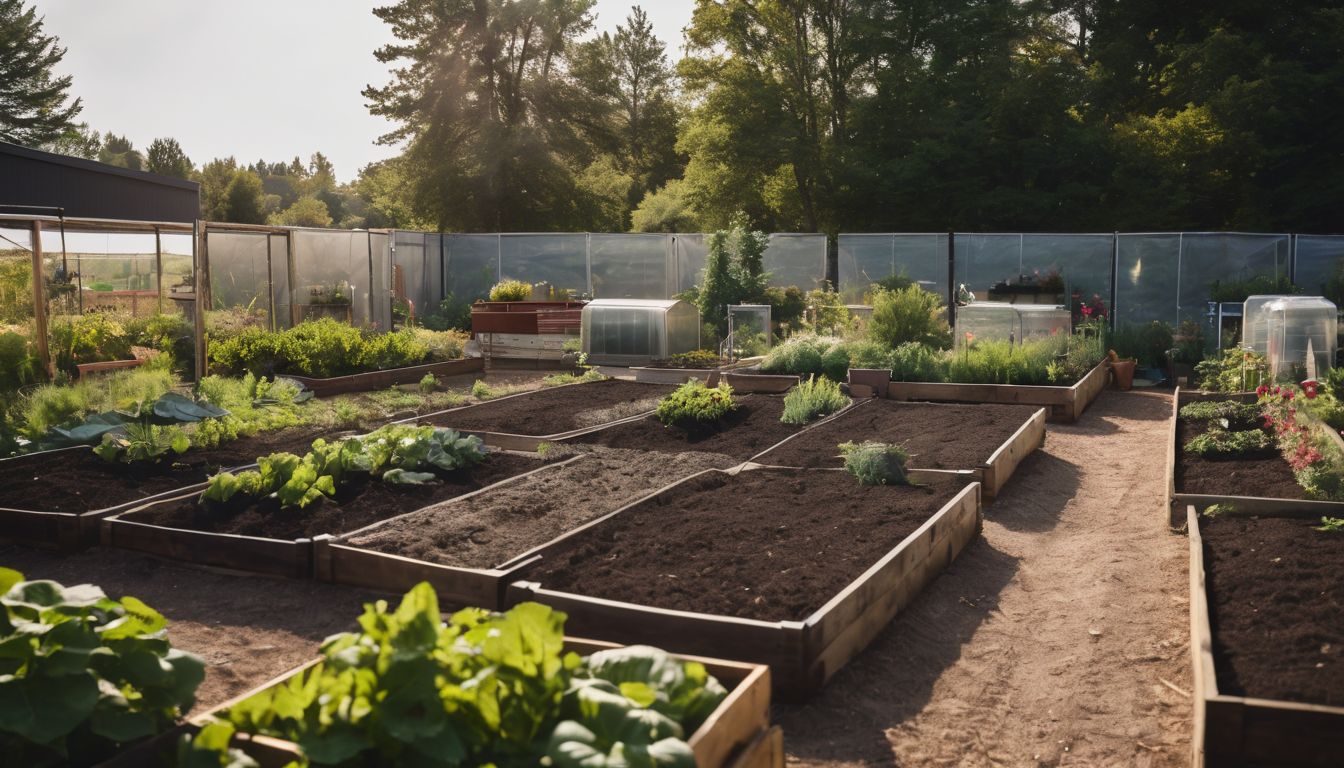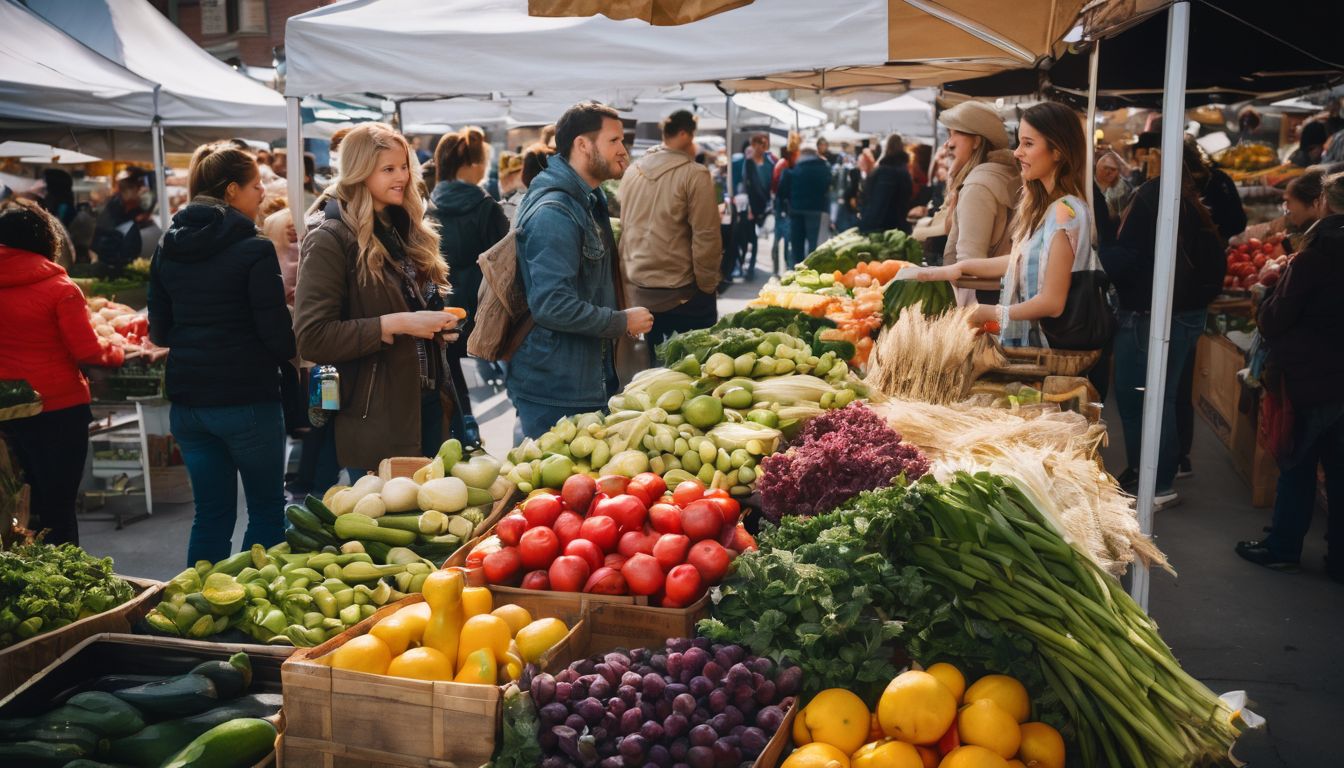We’re all too familiar with the predicament of a crammed wardrobe, peppered with garments that seldom see the light of day. It’s an issue that tugs on our collective conscience, especially when we consider the staggering reality: every minute, a lorry-load of textiles is squandered around our precious planet.
That’s why we’ve put together this handy guide brimming with actionable advice for setting up your own swap shop – a delightful and eco-conscious method to rejuvenate your clothing collection.
So roll up your sleeves and join us in weaving sustainability into the very fabric of fashion. It’s time to make eco-friendly choices not just necessary but absolutely en vogue!
Key Takeaways
- Swap shops encourage the reuse and recycling of clothes, reducing waste by giving items a second life instead of ending up in landfills.
- Organising a successful swap shop involves choosing an accessible space, setting clear rules and guidelines, inviting participants who value sustainability, and ensuring all leftover items are donated or recycled responsibly.
- By participating in clothing swaps, individuals support circular fashion and reduce the environmental impact of new clothing production while accessing high-quality pre-owned goods at no cost.
- Collaborating with charitable organisations for post – event donations extends the positive impact of swap shops into wider community support initiatives.
- Swap shops foster community engagement around sustainable living practices and promote environmental conservation through eco-conscious consumerism.
What is a Swap Shop?
A Swap Shop is a community event where people can exchange their gently used clothing, accessories, and other sustainable goods with one another. The benefits of hosting a swap shop include reducing waste, promoting sustainable fashion choices, and supporting ecoconscious consumerism.
Definition
A swap shop is a community-driven event where people come together to exchange their pre-loved items for others that are new-to-them. At these gatherings, we bring clothing and goods we no longer need and trade them with fellow participants.
This practice champions the principles of reduce, reuse, and recycle by giving clothes and products a second life instead of them ending up in landfills.
We embrace the ethos of sustainable living through swap shops. By participating in these events, we foster circular fashion and support ecofriendly fashion choices within our community.
The aim is not only to refresh our wardrobes or homes without spending money but also to make ecoconscious consumerism mainstream. Swap shops help us all move away from fast-fashion habits towards a more sustainable wardrobe filled with quality secondhand goods.
Benefits of hosting a swap shop
- Encourages community engagement and fosters a sense of togetherness, promoting sustainable practices in a fun and interactive way.
- Provides access to high-quality, pre-owned items at no cost, reducing the need for new products and minimising environmental impact.
- Promotes a circular economy by extending the lifespan of clothing and other goods through reuse, reducing the carbon footprint associated with producing new items.
- Empowers individuals to contribute to environmental conservation efforts by participating in an eco-friendly alternative to traditional consumption.
How to Organise a Clothing Swap
Choose a suitable space for the event, set clear rules and guidelines, invite participants through social media or local community groups, and ensure proper setup with designated areas for different types of clothing.
Choose a space
When selecting a space for a clothing swap, consider venues like community centres, local libraries, or even someone’s spacious backyard. These spaces can accommodate a large number of participants and provide ample room for displaying items.
Selecting a well-lit and ventilated area ensures that everyone can easily browse through the goods without feeling cramped or uncomfortable.
Additionally, choosing a central location accessible by public transport encourages more people to attend, reducing the carbon footprint of the event. Partnering with local businesses or sustainable organisations to host the swap in their premises also helps build community relationships and support environmentally friendly initiatives.
Set rules
When hosting a clothing swap, it’s important to establish clear guidelines to ensure a smooth and enjoyable experience for all participants. Here are some rules to consider:
- Establish a fair swapping system to ensure everyone has an equal opportunity to find new items.
- Set limits on the number of items each participant can bring to prevent overwhelming the event space and encourage thoughtful selections.
- Encourage participants to bring clean, gently used items in good condition to maintain the quality of the swap.
- Specify any specific themes or categories for swapping, such as clothing only, accessories, or eco-friendly products.
Invite participants
To make our clothing swap event a success, we need to invite participants who are passionate about sustainable fashion and reducing environmental impact. Spread the word among your friends, family, and community members who are interested in second-hand shopping, upcycling, or eco-friendly products.
Encourage everyone to bring their high-quality items for swapping! Join us in creating an environmentally friendly and socially conscious experience that promotes circular fashion and reduces textile waste.
Let’s come together as a community to support conservation efforts and reduce our carbon footprint through sustainable goods exchange at our upcoming clothing swap party.
Set up properly
When setting up your swap shop, choose a spacious and accessible location that can accommodate all participants comfortably. Ensure the space allows for easy browsing and trying on of items. Here are some tips to ensure everything is set up properly:
- Display items neatly and attractively, making it easy for participants to browse through the goods.
- Create clearly defined sections for different types of clothing or products to make it easier for participants to find what they’re looking for.
- Provide plenty of mirrors and changing areas so participants can try on items with ease.
- Consider using racks, tables, and shelving units to display the items in an organised and visually appealing manner.
- If possible, designate an area for socialising and refreshments, creating a welcoming and inclusive atmosphere for all participants.
Tips for a Successful Swap
Be organised, set clear rules, and encourage sustainable practices to ensure a successful clothing swap event. Read on to discover more ways to make your swap shop a hit!
Be organised
To ensure a successful clothing swap, it’s essential to have a well-organised system in place. This includes setting clear rules for the event, arranging items neatly for easy browsing, and establishing a structured process for swapping goods.
By being organised, participants can easily find what they are looking for and contribute to the sustainable exchange of fashion items. Planning ahead and having designated areas for different types of clothing will help create an efficient and enjoyable experience for everyone involved.
Prioritise sorting through the items before the event starts so that everything is ready to be displayed once participants arrive. Categorising clothes by type or size will assist in creating an orderly layout that facilitates seamless browsing and trading among attendees, ultimately contributing to a successful swap shop event.
Encourage sustainable practices
Promote eco-friendly behaviour by asking participants to bring reusable bags for their new finds. Encourage everyone to consider the environmental impact of their choices and opt for sustainable, second-hand items rather than buying brand-new products.
Also, raise awareness about the importance of upcycling and recycling clothes among attendees, highlighting how swapping reduces waste and supports a circular fashion economy. By implementing these practices, we can help build a more conscious and environmentally friendly community.
Now let’s discuss “Tips for a Successful Swap” to ensure that your event runs smoothly.
Plan for leftover items
When planning for leftover items, we designate a designated space to collect any remaining clothing or goods. We then ensure that these items are donated to local charities or recycled appropriately.
It’s crucial to have a clear strategy in place for dealing with any excess items post-swap, maintaining our commitment to sustainability and reducing waste.
Encouraging participants to bring along an item from home they no longer use can also help diminish the number of leftovers while promoting the idea of reusing and recycling. This approach aligns with our eco-friendly ethos and supports a circular fashion economy by giving new life to pre-loved items.
The Impact of Swap Shops on the Environment
Hosting a swap shop for sustainable goods has a positive impact on the environment. By reducing waste and promoting circular fashion, swap shops help to lessen the environmental impact of clothing production and consumption.
Partnering with charities and joining the fair fashion movement also contributes to making a difference in the world of eco-friendly products.
Reducing waste
To reduce waste, we encourage participants to bring high-quality items and only take what they need. By doing this, we can prevent unnecessary production of new goods and promote a more sustainable lifestyle.
Instead of discarding unwanted items, hosting a swap shop allows for the reuse and repurposing of clothing, accessories, and other goods, reducing the amount of waste that ends up in landfills.
Furthermore, by participating in a clothing trade event or community swap meet, individuals contribute to creating a circular fashion economy. This not only benefits the environment but also supports ethical consumption practices while promoting eco-friendly products within their community.
Promoting circular fashion
Promoting circular fashion involves embracing the concept of reusing and recycling clothing items to minimise waste and reduce our environmental impact. By participating in clothing swaps, we actively contribute to the sustainability of the fashion industry.
When engaging in secondhand shopping and sustainable clothing exchanges, we support conservation efforts and promote eco-friendly products within our community. Joining the fair fashion movement through swap shops allows us to play a vital role in reducing textile waste while also enjoying vintage clothing and thrift shopping experiences that are both ethical and environmentally responsible.
Partnering with charities for leftover items from swap shops ensures that unclaimed clothes find new homes rather than ending up as landfill waste. Our involvement not only encourages community sharing but also helps in reducing overall consumption by making use of pre-loved garments or other sustainable goods available at these events.
Partnering with charities
After promoting circular fashion and fostering a sustainable approach to fashion, partnering with charities is another way to extend the impact of swap shops. We can collaborate with local and international charitable organisations to donate any leftover items from the swap shop.
This ensures that the clothes or goods not exchanged find a new home, benefiting those in need while reducing waste.
By aligning with charities, we contribute to community support initiatives and endorse ethical consumption practices. Additionally, forming partnerships with charities allows us to advocate for fair fashion and create a platform for individuals who are interested in making more eco-conscious choices when it comes to their wardrobe.
Joining the fair fashion movement
To further our commitment to sustainable fashion, we embrace the fair fashion movement. By supporting ethical and eco-friendly production practices, we contribute to a more just and environmentally conscious industry.
This involves choosing clothing produced under fair labour conditions and with respect for the environment, helping to reduce the negative impact of fashion on both people and the planet.
Our participation in this movement signifies our dedication to promoting social responsibility within the fashion industry while making mindful decisions about our purchases.
By aligning ourselves with fair fashion principles, we actively advocate for transparency in supply chains and support brands that prioritise sustainability. This helps us foster meaningful change within the industry and encourages others to follow suit.
Conclusion
6. Conclusion.
Considering the environmental benefits, hosting a swap shop for sustainable goods is an impactful way to promote eco-friendly practices. By organising clothing swaps and encouraging bartering of second-hand fashion, we contribute to reducing waste and promoting circular fashion.
Partnering with charities and joining the fair fashion movement also helps in supporting conservation efforts while fostering a sense of community among environmentally conscious individuals.
FAQs
1. What is a Swap Shop for Sustainable Goods?
A Swap Shop for Sustainable Goods is an event where people can trade second-hand fashion and eco-friendly products without money, using bartering instead.
2. How do you host a successful swap shop?
To host a successful swap shop, organise a space where people can bring and display their goods, make sure items are in good condition, and encourage the community to participate in trading eco-friendly products.
3. Can I find different types of items at a swap shop?
Yes, you can find various types of items like gently used clothing, accessories, home decor and other sustainable goods at a swap shop.
4. Why should I consider going to a swap shop?
Going to a swap shop supports sustainability by reusing second-hand fashion and exchanging eco-friendly products which helps reduce waste and promotes community sharing.





